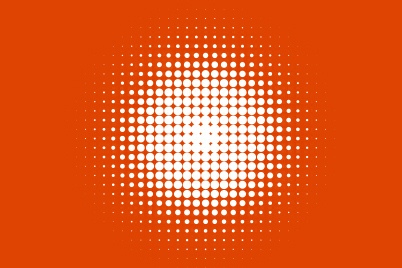

07584-


ON THE DOT
Printing -
DPI stands for Dots Per Inch. This is basically the number of dots contained within a square inch or 2.5cm of an image or document. DPI is important as the greater the amount of dots, the better quality the image will be. The amount of DPI required depends on how the image is intended to be used. This article will explore DPI and how it should be used in areas of digital and print.
Guidelines for DPI
The resolution of an image or artwork depends on where it is to be used. If an image is to be used for digital media or websites, then a resolution between 72dpi & 96dpi, referred to as Low Resolution, will be sufficient. As with all social media, the amount of time it takes to download an image is critical to the recipient retaining their interest in the content. Therefore, the smaller the file size, the better and the lower resolution here will help keep that file size to a minimum. The issue here is that once the image is uploaded, the quality will be fine for viewing online, but the quality will not be good enough if required for print.
Medium Resolution is anything between 150dpi and 200dpi. This resolution is more often used when printing on home printers, such as documents or photographs etc. Again, this will not be good enough for large format prints but is sufficient for smaller images or text.
High Resolution is 300dpi or greater. The minimum standard of dpi for print is usually 300dpi, but for larger scale designs, the dpi capable of most professional digital cameras, combined with advanced design software packages mean that most artwork or images that are generated will already have this standard of resolution, if not greater.
How image size affects DPI
When scaling an image, it is important to remember that this will affect the DPI. For example, if you have a 300dpi image and reduce it in size by 50%, the DPI will double to 600dpi. On the other hand, if you have a 72dpi image and you double that in size, the DPI will halve to 36dpi. Therefore, it is important to consider how reducing or enlarging an image will affect its overall quality. In general, unless you have a high resolution image to start with, increasing its size will definitely result in the image losing its crispness.
However, one thing to consider here, is when a high resolution image is scaled up to fit an area such as a billboard, you need to take it account where it will be viewed. Unlike a magazine which will be read up close therefore requiring high resolution print & imagery, a billboard will be viewed at a distance, so it is possible to have a resolution of only 50dpi and from afar, the image still appears sharp.
Conclusion
DPI is an important part of imagery and print and therefore it is vitally important to pick the correct resolution for the media that it is intended. Failure to do so will have a huge impact on both the quality and impact of your work.
Please note that the views, thoughts, and opinions expressed in this article belong solely to the author, and not necessarily to any other group or individual. To ensure you are fully compliant with all current legislation, please take legal/professional advice and do not rely solely on the information provided in these articles.

Copyright © 2018-
Terms of Use | Privacy Policy, GDPR & Cookie Policy | Trading Terms





